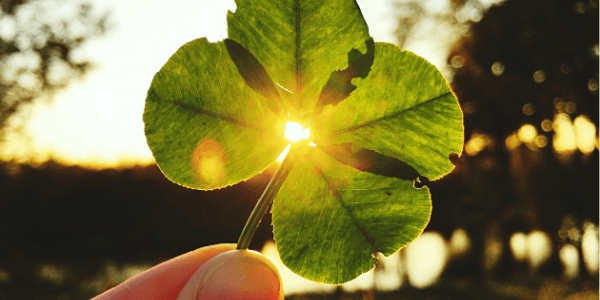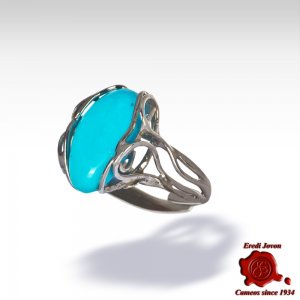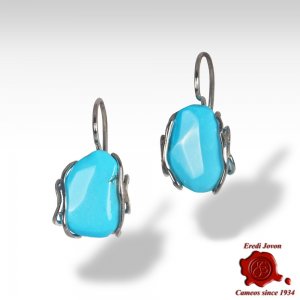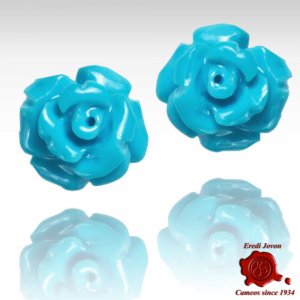The Turquoise Stone: How to recognize it, clean it and care for it

Today we are talking about a stone that, although not being native to Italy, finds in this country its highest expressions in the field of jewelry.
Origins and history of this precious stone
Turquoise is a hard stone that has been used since ancient times (just remember the engraved blue beetles found in many Egyptian pharaoh tombs) to build precious jewelry and ornamental objects: earrings, rings and bracelets in the first place.
Plinio mentions the turquoise in his "Naturalis Historia" calling it “Callaina” (term derived from Greek meaning "beautiful stone"). He said that this stone was very delicate as it could "be attacked by oils, scents, balms, and vices."
Why am I telling you this? You will understand this by reading the post to the end.
Where you can find the turquoise, how to recognize it and how it is preserved beautiful and shiny
-
Where you can find it
Like Lapis Jewelry, turquoise stone is often found as concretion, or encrustation of other stones and is often next to copper mines.
-
How you can recognize it?
The turquoise has a blue color with imperfections called matrices and is a very porous stone, from here the problem that Pliny had already noticed: scents or other acidic substances could alter its shine and even make it change color.
The same air oxygen brings turquoise to the shades of green (also due to the small copper intrusion that the stone often contains) through a process that is called "oxidation." For this reason, in the past, people tried to bring back the turquoise color using hydrogen peroxide and so the cleaning was obtained.
-
How to preserve it?
Nowadays, paraffin is used to stabilize the color and make the stone stay beautiful longer.
So my advice is always the same: do not use perfumes and hair sprays directly on the stone and remove jewels when you wash your hands.

Turquoise paste, what are the differences?
Another thing is, instead, the turquoise paste that is obtained by agglomerating resins with the residues of turquoise processing.
How can I understand when it's not natural?
Easy: it's perfect! And as you know, if you have been following me for a while … perfection in nature does not exist (not even in my wife …. She cannot hear me anyway).
Turquoise paste, for example, does not have any matrices and imperfections and is of uniform color throughout its surface.
I want to emphasize a fundamental concept for me: turquoise paste has its qualities, its beauty and its dignity, as long as it is sold as such.
Those who say aloof: “I want turquoise not turquoise paste”. must know something …

Turquoise Jewelry
Genuine Turquoise Jewelry Handmade in Italy | Certificate Included
Genuine Turquoise JewelryPrice of real turquoise
The price of natural first grade turquoise stone, especially in bead necklaces, is very high, not far from the one of coral.
With just a few hundred euros you can only buy a turquoise paste bead necklace otherwise you have to prepare yourself to invest in a few thousand euros (an investment that will still be re-evaluated over time due to the ever-shortage of this high-grade material).
Another thing is the single turquoise cabochon with which to make a ring or a pendant or a pair of earrings that, in fact, is finally mounted in gold, costs less than a branded pair of jeans made in China, in some cases, exploiting child labor.
So I always remain of my opinion: we must learn from day to day to give a fair (even monetary) value to things.
Where does the turquoise come from?
This stone is present in many countries around the world, practically embracing almost all continents: Africa (mainly from the Sinai in Egypt), South America (the famous turquoise of Mexico used by the Maya and Incas), Asia (Persia and China) and North America (famous for that used by Navajos Indians in Arizona).
For modern jewelry people use almost exclusively the turquoise of
-
Arizona
-
Persia (Iran)
Jewelry in turquoise stone: why Italy remains the best place to buy it from.
_1.jpg)
In the various countries of origin, it is possible to find local production of very rudimental jewels, therefore Italy, always famous for its high-level jewelry manufactures, remains the country where turquoise finds its best place.

Sleeping Beauty Turquoise Jewelry
Great Turquoise Jewelry Handmade in Silver or Gold | Certificate Included
Genuine Turquoise JewelryItalian jewelers have the experience of coral manufacturing and thanks to this they are able to create higher quality gold and turquoise jewels than other countries. Ironically, I have often been selling turquoise jewelry to customers from Iran, a country from which we import turquoise, claiming that they could not find gold and stone settings so special and so elegant in their country of origin.
I am leaving you with one last gem from my city: beautiful turquoises are kept in the treasury of San Marco and for centuries our Moretti are embellished with this wonderful stone which once again demonstrates the millennial cultural exchange between Venice and the East.
The biggest hug in the world ... here you can download my ebooks for free

Maybe for you could be interesting as well:
-
Blue Lapis Jewelry
-
How to give age to a cameo
-
Murano Glass History
-
Different qualities of gold
-
Red or Pink coral: which is more precious
-
Intaglio Jewelry roots
-
Signet and Seal Pinky Rings
Information
Last post
-

Love Hope Faith Amulet | Meaning and Tradition
Discover the meaning of the Faith, Hope & Charity charm: a timeless amulet to wear every day. A jewel that tells...
-

The Four-Leaf Clover: the rare gift that dares to speak to the heart
Discover the true meaning of the four-leaf clover and its Italian twist with the lucky cornetto charm—a rare story...
-











